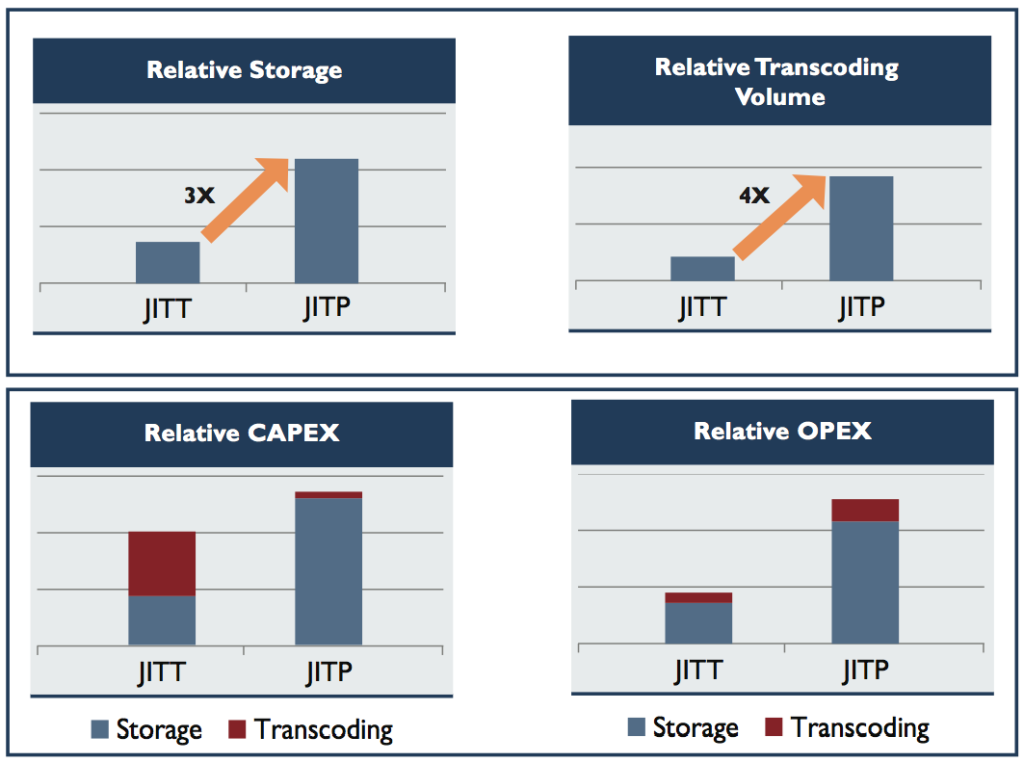White Paper: Shifting Live-To-VOD Media Processing To The Edge
To date, the most popular paradigm for multiscreen content transcoding has been a just-in-time-packaging (JITP) approach, driven by low-cost storage, manageable content volumes, and expensive live transcoders. However, soaring content volumes and growing profile complexities on the one hand, and increasing transcoder densities and falling transcoding costs on the other, are shifting economics in favor of just-in-time-transcoding (JITT). This is particularly true of network DVR deployments where operators are required to maintain one copy of recorded content per user.
In a new Frost & Sullivan white paper, we take a comprehensive look at the CAPEX and OPEX economics of JITT deployment as compared to JITP deployment. Data shows that when considering a steady audience with consistent consumption of time-shifted linear content, the five-year total cost of ownership (TCO) of JITP infrastructure is nearly twice that of the JITT alternative.
 This is due to the fact that the CAPEX for JITT transcoders and the reduced storage that they enable is 30% lower than the JITP alternative. In addition, we see 40% annual savings in OPEX in the JITT scenario as compared to JITP. This is also because volume consumption in this use case is predictable, and therefore capacity can be carefully planned to optimize utilization.
This is due to the fact that the CAPEX for JITT transcoders and the reduced storage that they enable is 30% lower than the JITP alternative. In addition, we see 40% annual savings in OPEX in the JITT scenario as compared to JITP. This is also because volume consumption in this use case is predictable, and therefore capacity can be carefully planned to optimize utilization.
The paper also provides details on the total cost of ownership, CAPEX Considerations, types of transcoding workflows, sources of savings and other industry trends. You can download the paper for free here.
